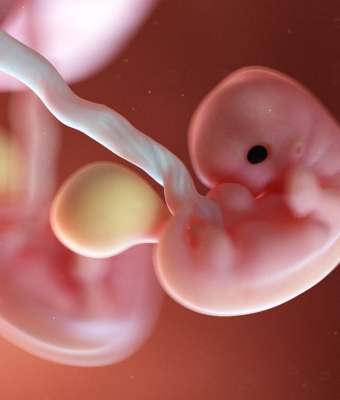Introduction
Pediatric Hypoplastic Left Heart Syndrome (HLHS) is a rare and severe Congenital Heart Defect (CHD) that poses a significant challenge to the medical community. In the past, HLHS was believed to be a life-threatening diagnosis with limited treatment choices and a dismal prognosis. However, introducing the Fontan Procedure has brought about a revolutionary change in managing this complex condition, offering hope and improved outcomes for affected newborns. Before the introduction of groundbreaking surgical interventions, many infants diagnosed with HLHS did not survive beyond the first few months of life.1,2.
HLHS: An Overview
HLHS is a congenital and intricate heart condition characterized by a single-ventricle defect. Approximately 1 in 3,800 births occur annually, about 3% to 4% of CHD. This condition predominantly affects males and individuals assigned male at birth, accounting for 67% of cases, compared to females and individuals assigned female at birth. In this syndrome, the left side of the heart, including the left ventricle and aortic valve, is severely underdeveloped during pregnancy. This malformation inhibits the heart’s ability to pump oxygen-rich blood to the body, leading to life-threatening consequences shortly after birth.1 HLHS, seen in newborns, involves the incomplete development of certain left heart structures, including:
- Left ventricle: Situated in the lower left part of the heart, it pumps oxygen-rich blood to the aorta.
- Aorta: The largest blood vessel in your body carries blood from your heart to the rest of your body.
- Mitral and Aortic Valves: These tissue flaps are crucial in regulating blood flow through your heart.
The aortic valve permits blood passage from the left ventricle to the aorta, while the mitral valve controls blood flow from the atrium to the ventricle. Additionally, a baby diagnosed with HLHS may exhibit an Atrial Septal Defect (ASD), an opening between the two upper heart chambers. Normally, this area is composed of solid tissue.1,2.
Symptoms and Triggers of HLHS
Newborns with HLHS often exhibit severe illness shortly after birth, with symptoms such as cyanosis (greyish-blue lips and gums), rapid, difficult breathing, poor feeding, cold extremities, weak pulse, and unusual drowsiness or inactivity.4
Failure to keep the natural connections between the heart’s left and right sides (foramen oval and ductus arteriosus) open in the first few days of life for babies with HLHS can lead to shock and potential fatality. Signs of shock include:
- A short and fragile pulse.
- Breathing that might be slow and shallow or fast and vigorous.
- Dull eyes that appear to be staring.
The cause remains unidentified, but having one child with this condition increases the risk of another with a similar situation. In certain cases, the cause can be attributed to genetics. Babies with mutations in specific genes, such as GJA1 or NKX2-5, may face an increased risk of HLHS. Some babies with genetic disorders like Turner syndrome or Trisomy 18 might also be diagnosed with HLHS.4

Fontan procedure redirects oxygen-poor blood from the lower body, allowing it to bypass the heart and flow directly to the pulmonary artery.5
Fontan Procedure: A Multi-Stage Surgery
The Fontan Procedure is usually performed in stages. Each stage is crucial for ensuring proper circulation and function of the heart. The stages may include:
- Stage I: Norwood Procedure: Usually performed within the first week of life, the Norwood procedure involves reconstructing the aorta and providing a stable source of pulmonary blood flow. This initial surgery lays the foundation for the subsequent stages by addressing the immediate life-threatening issues associated with HLHS.
- Stage II: Bidirectional Glenn Operation: Typically performed around 3 to 6 months of age, the Glenn procedure partially redirects blood flow to improve oxygenation. During this procedure, the superior vena cava, which transports oxygen-depleted blood from the upper body, is linked directly to the pulmonary arteries.
- Stage III: Fontan Procedure: The final stage of the treatment, the Fontan procedure, is typically performed when the child is 2 to 4 years old, depending on individual factors and the child’s condition. During this procedure, the surgeon directly connects the inferior vena cava to the pulmonary artery, bypassing the underdeveloped left side of the heart entirely. This transition allows the venous blood returning from the lower part of the body to flow directly to the lungs for oxygenation without passing through the heart.3,5.
The Fontan Procedure has a transformative impact on the management of pediatric HLHS, offering several benefits to affected children:
- Improved Quality of Life: Before the Fontan procedure, children with HLHS faced significant limitations in their daily lives. The surgery provides the opportunity for a more active and fulfilling life, enabling children to participate in age-appropriate activities and achieve developmental milestones.
- Enhanced Oxygenation and Circulation: By bypassing the underdeveloped left side of the heart, the Fontan procedure allows oxygen-poor blood to reach the lungs directly, enabling better oxygenation and circulation throughout the body. This procedure alleviates cyanosis (bluish discoloration of the skin) and enhances the child’s ability to engage in physical activities.
- Reduced Mortality Rates: The Fontan procedure has significantly lowered mortality rates for children born with HLHS. While it does not cure the underlying heart defect, it provides an essential palliative approach to support cardiac function and prolong life.
- Advances in Post-operative Care: Post-operative management and medical care have advanced over the years, leading to better outcomes and reduced complications after the Fontan procedure. This ongoing progress ensures that children receive comprehensive follow-up care tailored to their needs. 5
Challenges and Future Directions
While the Fontan procedure has undoubtedly revolutionized the treatment of pediatric HLHS, some patients may experience complications or have residual heart issues post-surgery. Long-term complications like arrhythmias and heart failure require continuous research and innovative solutions. Collaborative efforts between pediatric cardiologists, surgeons, and researchers focus on refining surgical techniques, optimizing patient selection, and exploring novel therapies to enhance outcomes and extend life expectancy for children with HLHS.1,2.
Conclusion1
Children will require regular follow-up appointments with a cardiologist throughout their life, at least once a year. These visits are essential to monitor the proper functioning of their heart, lungs, and other organs. Most children diagnosed with HLHS must take heart medications continuously. Additionally, they must take antibiotics before undergoing other surgeries, including dental procedures. These medications help lower the risk of endocarditis, a heart infection.
The Fontan procedure has broken barriers to managing pediatric Hypoplastic Left Heart Syndrome. With each stage of this innovative surgical approach, the lives of children born with HLHS are positively impacted, offering hope and improved quality of life. As medical science progresses, the Fontan procedure stands as a testimony to the extraordinary achievements that can be attained through unwavering dedication and collaborative efforts in pediatric cardiology.
References
- Hypoplastic Left Heart Syndrome. Accessed August 1, 2023. Available at: https://my.clevelandclinic.org/health/diseases/12214-hypoplastic-left-heart-syndrome-hlhs
- Rathod RH. Hypoplastic left heart syndrome: Anatomy, clinical features, and diagnosis. Accessed August 2, 2022. Available at: https://www.uptodate.com/contents/search.
- Staged Reconstruction Heart Surgery, Children’s Hospital of Philadelphia. Accessed August 2, 2023. Available at: https://www.chop.edu/treatments/staged-reconstruction-heart-surgery
- Hypoplastic Left Heart Syndrome. Accessed August 2, 2023. Available at: https://www.mayoclinic.org/diseases-conditions/hypoplastic-left-heart-syndrome/symptoms-causes/syc-20350599
- Fontan Procedure. Accessed August 3, 2023. Available at: https://my.clevelandclinic.org/health/treatments/24545-fontan-procedure




